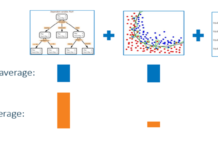Boosting is a machine learning technique in artificial intelligence (AI) that aims to improve the accuracy and performance of a model by combining the predictions of multiple weaker models, often called “base learners” or “weak classifiers,” to create a strong or ensemble model. The idea behind boosting is to give more weight to the examples that are misclassified by the current ensemble of models, thus focusing on the most challenging instances and gradually improving the model’s performance.
Here’s a general outline of how boosting works:
- Train a base model on the dataset.
- Adjust the dataset by assigning higher weights to the misclassified instances from the previous model. This gives more emphasis to the examples that the current model struggles to classify correctly.
- Train another base model on the adjusted dataset.
- Repeat steps 2 and 3 for a predefined number of iterations or until a stopping condition is met.
- Combine the predictions of all the base models to make the final prediction. Typically, the combination of these predictions is weighted based on the performance of each base model.
Popular boosting algorithms include AdaBoost (Adaptive Boosting), Gradient Boosting, and XGBoost. Each of these algorithms has its unique characteristics and hyperparameters, but they all share the general principle of iteratively improving the model’s performance by focusing on the instances that are difficult to classify correctly.
Boosting is known for its ability to handle complex datasets and often results in very accurate models. However, it can be more computationally intensive and prone to overfitting if not properly tuned or if too many weak learners are used. It is a powerful tool in the AI and machine learning toolbox and is widely used in various applications, including classification and regression tasks.











